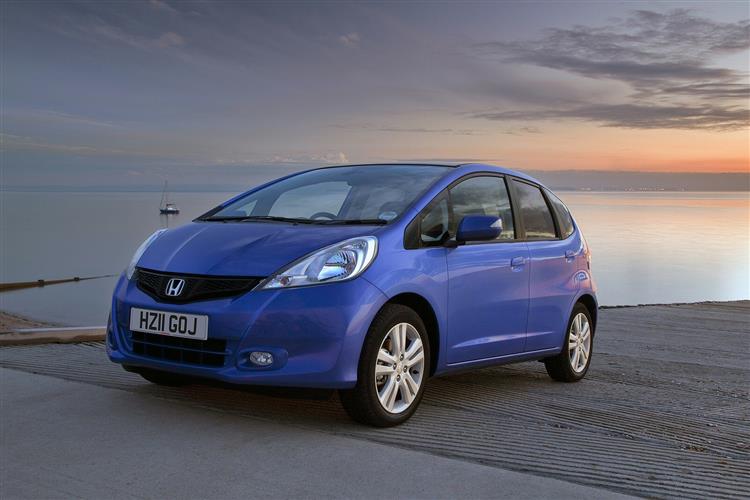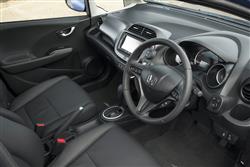This is a sample, showing 30 seconds of each section.
SMOOTH OPERATOR (some text hidden) SECTIONED_new_hondajazz_2011
By Andy Enright
Introductionword count: 142
Buying a used car can be a stressful process. Let's assume for example, that you're looking for a previously owned supermini. Lurking in the back of your mind is the suspicion that you'll buy a lemon and look stupid. Buy one with a warranty and you suspect the warranty might be a lemon and leave you with egg on your face. This is the reason why risk-averse people in this segment buy cars like Kia Rios and Hyundai i20s. But there is an alternative strategy to being welcomed into South Korea's bosom. It's the Honda Jazz, a used car purchase that's as trouble-free as they come, statistically speaking at least. The second generation version was particularly recommendable and if you're looking for one, then try and land yourself the improved facelifted version, launched in 2011. Here's how to find a good one.
Modelsword count: 15
5-door supermini [(1.2, 1.4 petrol, 1.3 petrol/electric hybrid) S, SE, Si, Si-T, ES Plus, Hybrid]
Historyword count: 418
How exactly do you better a best seller? Back in 2007 when Honda launched the MK2 version of their Jazz supermini, you have the feeling that they really weren't quite sure. Its predecessor, launched in 2002, had after all, offered buyers something unique and unobtainable elsewhere, a revolutionary 'magic seat' interior design that gave supermini buyers the greater practicality of a larger family hatchback. The result was over 30 international awards, residual values higher than any other rival in its sector and a sales performance that saw the car consistently amongst the top three best sellers in its segment, embarrassing cheaper contenders like Toyota's Yaris and Renault's Clio. It was quite an act to follow. Of course, the replacement second generation Jazz kept everything that was good about its predecessor, even improving upon its practicality with a slightly larger, more practical body that came with more of a 'big car' feel. But it wasn't enough. By now in an over-stuffed supermini market, the Jazz needed a new unique selling point and the original version of this MK2 model car didn't have it. Hence the need for the revised version we're looking at here, a car that arrived in 2011. The plushest versions of the updated model offered the option of a hybrid engine, making it the first car in the supermini sector to offer petrol/electric power. It was technology that pushed the price up of course, forcing Honda engineers to also develop a higher quality road going experience with a smooth CVT automatic gearbox that also benefited more affordable petrol variants that most people bought. Throughout the life of this model, Honda continued to try and keep the Jazz relevant and fresh. After the 2011 update, we saw the company offer three years' free servicing on all 1.4-litre petrol models and Hybrid versions. Then in June 2012, they introduced fuel-saving Idle Stop technology to the Jazz 1.2 i-VTEC. In July of that year Jazz Si appeared, offering a more focused suspension and steering set up as well as interior fitments like a leather-trimmed steering wheel, black and silver supportive seats and cruise control. An Si-T version was sold alongside, with the addition of satellite navigation and integrated Bluetooth. Exactly one year later, Honda gave us the ES Plus model. This replaced the ES and featured 16” alloy wheels, cruise control, privacy glass, driver's front armrest and leather-trimmed steering wheel and gear lever. It was exclusively teamed with the 1.4 i-VTEC engine. An all-new Jazz was unveiled in 2015.
What You Getword count: 621
The post-2007-generation Jazz is certainly sleeker, a little more Civic-like, than its predecessor - which is hardly surprising as the two cars were designed by the same person. This post-2011 facelift model got smarter projector-style headlamps and restyled bumpers that helped deliver a sleeker 0.33 Cd drag factor. What's important though, is that this car was one of the roomiest and most practical cars in its class. As with most superminis, you'd struggle to fit three adults across the back seat for any length of time but two would be quite comfortable, especially since the seat backs recline by up to 73mm for extra comfort on longer trips. But features like that you can find in other superminis. It's the packaging brilliance of this car that sets it apart, made possible by the way that the fuel tank has been re-positioned under the front seats to liberate the floor of the cabin and allow the seats to be folded into all sorts of permutations. That comes courtesy of the Honda 'Magic Seating system', something you'll need if the surprising spacious boot isn't big enough. That may not be the case. After all, the 379-litre capacity you get in standard models is bigger than you'll get in a Ford Focus from the next class up, though if you opt for a Hybrid, that capacity does drop to 303 litres. Plus you can make the best use of the space on offer too, thanks to a Double Trunk design which can divide the space on offer into four different configurations for carrying different loads. If that's not enough, then you can transform the interior of your Jazz in over 180 ways at the lift of a lever or the push of a button. Let's say you want to push forward the rear seats for example, to free up a potential 883-litres of space and store something like a bicycle. The first thing you notice is the ease of the folding process. Normally with superminis, you've either got to mess around pulling seat bases forward before you can drop a rear backrest that often has to have the rear head restraints detached too. Or you've a backrest that simply flops forward but doesn't give you a flat loading floor. Here, in contrast, you've only to release a simple lever mechanism, push forward from the rear and watch as backrest and seat base retract together into the rear footwell in one quick, fluid motion. With this done, you can not only store something as bulky as a bike but if you're not using the front passenger seat, you can also recline it and accommodate items as lengthy as a 240cm pair of downhill skis. Garden centre shoppers meanwhile, will love the way you can lift up the rear seat cushion cinema-style against the rear seat back creating a tall protected space in the rear seat footwells for items like plants. Plus there's plenty of oddments space too. And at the wheel? Well there aren't too many trendy soft-touch plastics on display, but Honda has still managed to create quite a classy, up-market feel thanks to a smarter, darker dashboard material chosen to contrast with the soothing backlighting used for the various dials, gauges and displays across the dashboard, orange in standard models and blue if you've gone for the Hybrid. There's an airier, more spacious feeling than you'd expect in a car so small, even if you haven't gone for a car with the huge optional panoramic glass sunroof. The carefully-designed windscreen increases all-round vision and thinned front A-pillars allow light to flood the cabin. The driving position offers plenty of adjustment, too, and it shouldn't be a problem for most people to get comfortable.
To see the full road test text contact us on 0330 0020 227
Pictures (high res disabled)

.jpg)
|
.jpg)
|
.jpg)
| |||
.jpg)
|
.jpg)
|

|
Scoring (subset of scores)
Category: Small Runabouts
| Performance | |
| Handling | |
| Comfort | |
| Space | |
| Styling, Build, Value, Equipment, Depreciation, Handling, Insurance and Total scores are available with our full data feed. | |



